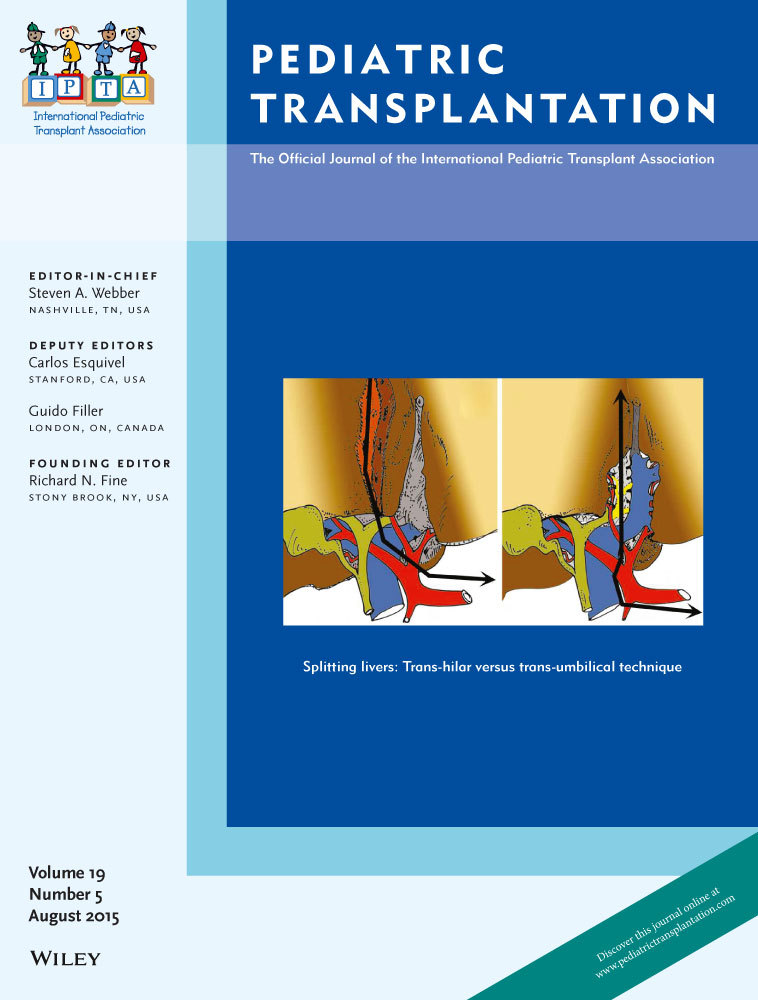Lack of significant improvements in long-term allograft survival in pediatric solid organ transplantation: A US national registry analysis
Abstract
Improvements across many facets of transplantation have led to better 1-yr outcomes of transplanted organs. In this study, we assessed whether longer-term attrition rates improved in pediatric kidney (KI), liver (LI), heart (HR) and lung (LU) transplant (TX) survival. We analyzed data between 1989 and 2008 from 5747 KI, 7348 LI, 5103 HR, and 715 LU TXs (under 18 yr of age at transplant, first solitary transplant only), from the National Scientific Registry of Transplant Recipients database in the USA. Kaplan–Meier (K-M) or ordinary least square (OLS) estimates were used to calculate median and projected survival half-lives. Attrition rates, defined as percent failing within a given time period, were stratified by year of TX. Median half-lives from 1989 TX year to 2005 TX year have shown a major improvement only in LI TX, remaining unchanged in HR and KI TX, or remaining very low in LU TX. All four organ TX types have shown a dramatic drop in first-year attrition rates from 1989 to 2008. However, longer-term attrition rates (1–3, 3–5, 5–10 yr) have remained largely unchanged for all four organ TX types. Further progress in long-term survival will need targeting end-points beyond first-year rejection and survival rates.




